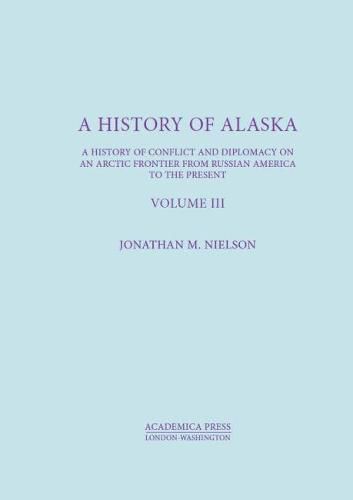Readings Newsletter
Become a Readings Member to make your shopping experience even easier.
Sign in or sign up for free!
You’re not far away from qualifying for FREE standard shipping within Australia
You’ve qualified for FREE standard shipping within Australia
The cart is loading…






The Second World War was to Alaska what the First World War had been to the nation. The essential reality of Alaska’s experience during World War II was the end of its isolation from the continental United States. As a consequence of the war, Alaska’s territorial era entered its twilight years, eclipsed by the dawn of statehood nineteen years later and driven largely by military imperatives. A further legacy was Alaska’s inevitably significant role in the militarization of the Arctic, a strategic watershed that emerged in the postwar confrontation between the United States and the Soviet Union. The conjunction was fortuitous as it enhanced Alaska’s strategic importance in national defense. Indeed, Alaska was in the estimation of one military authority America’s Gibraltar of the North.
While the presence of the armed services in Alaska continued to decline as the war’s strategic focus shifted south, worsening relations with the Soviet Union by 1945-46 caused growing alarm in Washington. Perceptions of hardening Soviet intransigence and more strident demands in Europe and elsewhere provoked concerns about postwar American-Soviet relations. Given these perceptions, it was obvious that zones of confrontation and potential conflict emerged everywhere America-Soviet interests and ambitions clashed and that this might be especially serious where the two superpowers came closest to each other territorially. Here, a kind of watery…invisible…Berlin Wall demarcated the free world from the communist bloc…an ice curtain every bit as real as the barrier Winston Churchill so vividly described in his famous
iron curtain
speech.
Within a few years a vast defense perimeter ran from extreme northwestern Alaska, through Attu and the Aleutian islands, Paramushiru in the Kuriles, the Bonin Islands, to the Philippines, and thence eastward to the Pacific coast of South America. Abruptly Alaska was elevated anew to geographic and strategic stature, and it now seemed unlikely that the territory could ever again be left defenseless. Thereafter with advent of the Great Circle Route over the pole, Alaska’s military relevance increased steadily and assumed even greater importance during the postwar decades. This reflected changing military relationships, advances in military technology, and revised strategic doctrines. As United States-Soviet relations became increasingly abrasive, voices in Congress were again heard calling for Alaska’s re-militarization.
$9.00 standard shipping within Australia
FREE standard shipping within Australia for orders over $100.00
Express & International shipping calculated at checkout
The Second World War was to Alaska what the First World War had been to the nation. The essential reality of Alaska’s experience during World War II was the end of its isolation from the continental United States. As a consequence of the war, Alaska’s territorial era entered its twilight years, eclipsed by the dawn of statehood nineteen years later and driven largely by military imperatives. A further legacy was Alaska’s inevitably significant role in the militarization of the Arctic, a strategic watershed that emerged in the postwar confrontation between the United States and the Soviet Union. The conjunction was fortuitous as it enhanced Alaska’s strategic importance in national defense. Indeed, Alaska was in the estimation of one military authority America’s Gibraltar of the North.
While the presence of the armed services in Alaska continued to decline as the war’s strategic focus shifted south, worsening relations with the Soviet Union by 1945-46 caused growing alarm in Washington. Perceptions of hardening Soviet intransigence and more strident demands in Europe and elsewhere provoked concerns about postwar American-Soviet relations. Given these perceptions, it was obvious that zones of confrontation and potential conflict emerged everywhere America-Soviet interests and ambitions clashed and that this might be especially serious where the two superpowers came closest to each other territorially. Here, a kind of watery…invisible…Berlin Wall demarcated the free world from the communist bloc…an ice curtain every bit as real as the barrier Winston Churchill so vividly described in his famous
iron curtain
speech.
Within a few years a vast defense perimeter ran from extreme northwestern Alaska, through Attu and the Aleutian islands, Paramushiru in the Kuriles, the Bonin Islands, to the Philippines, and thence eastward to the Pacific coast of South America. Abruptly Alaska was elevated anew to geographic and strategic stature, and it now seemed unlikely that the territory could ever again be left defenseless. Thereafter with advent of the Great Circle Route over the pole, Alaska’s military relevance increased steadily and assumed even greater importance during the postwar decades. This reflected changing military relationships, advances in military technology, and revised strategic doctrines. As United States-Soviet relations became increasingly abrasive, voices in Congress were again heard calling for Alaska’s re-militarization.